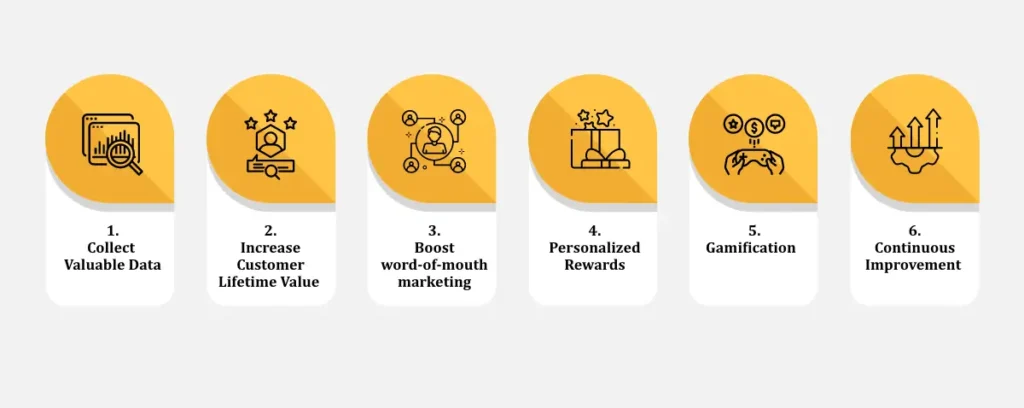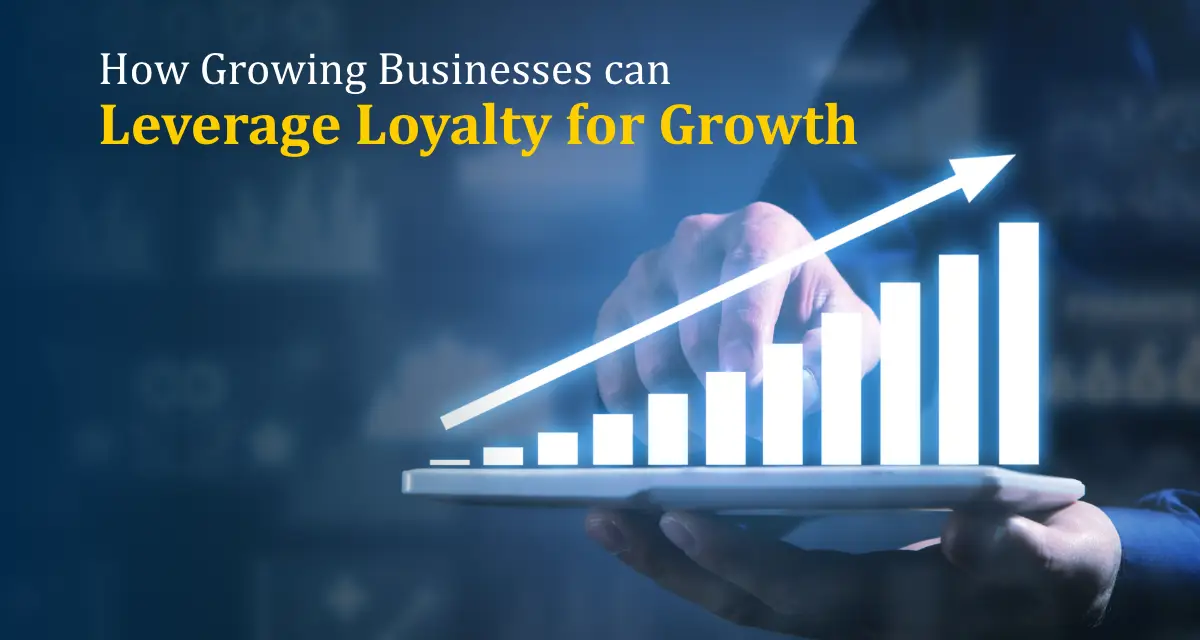Retaining customers is crucial for any business looking to drive growth and increase revenue. In today’s competitive market, brands must find ways to stand out and create long-term customer relationships. According to a recent survey by Accenture, 87% of customers believe it’s important to purchase from a brand that understands customers.
Innovative brands exceed customer expectations at every interaction, and remember, customers, don’t think in terms of channels as marketers do. They engage with brands in the most convenient way for them at that given time and place.
One effective way for businesses to retain customers is through loyalty programs. These programs offer rewards, incentives, and exclusive access to customers for repeat business. These programs provide customers with benefits and businesses with valuable data and insights about their customers.
By understanding customer behavior, preferences and demographics, businesses can tailor their marketing efforts and improve the customer experience. Also, loyalty programs can help brands differentiate themselves from competitors, boost word-of-mouth marketing, and encourage upselling and cross-selling. This article will explore how growing businesses can leverage loyalty programs to increase customer retention, and drive sales, eventually leading to growth. Let’s look at some ways growing businesses can benefit from a loyalty program.

1. Collect valuable data
Loyalty programs allow businesses to collect data on customer behavior and preferences, which can be used to tailor marketing efforts and improve the customer experience. Businesses can better understand customer preferences and tailor their loyalty efforts accordingly by collecting data on customer behavior, such as purchase history, frequency of visits, and average transaction value.
Additionally, collecting customer data at various touchpoints can help with personalization. According to an Accenture survey, customers said a brand had communicated in a way that was personal, and 71% said that it was because the brand had information about them or their family that they didn’t share directly. Loyalty programs are an excellent source for collecting zero and first-party data.
2. Increase customer lifetime value
Loyalty programs can increase customer lifetime value by incentivizing repeat purchases and fostering a sense of brand loyalty among customers. Through rewards and perks, such as discounts or exclusive access to products and services, loyalty programs can encourage customers to continue doing business with a company. For example, a growing business can incorporate a loyalty program that offers points or rewards for each purchase; this can encourage customers to return and make more purchases to accumulate more points or rewards.
e.l.f a famous brand in cosmetics uses the tiered loyalty system to increase customer lifetime value smartly. The customer gets a point on every purchase; as the points grow, so does the level, and the more exclusive the rewards get. In other terms, the more loyal your customers are, the more they buy from you and the more they earn rewards. Loyalty program tiers can help keep your customers engaged and the brand on top of their minds, leading to increased repeat business and customer lifetime value.
3. Boost word-of-mouth marketing
Satisfied customers who feel appreciated through a loyalty program are more likely to recommend the business to friends and family, increasing the company’s reach. For example, give VIPs an early look, access, or an upgrade if you launch a new product or service. This tactic makes them feel special, aids in amplifying the promotion of a product, and ultimately customers refer your product to friends or family.
It is important to note that, McKinsey reports that “70% of buying experiences are based on how the customer feels they are being treated”. When customers feel valued, they’re far more likely to have a positive experience with your brand, ultimately recommending it to others.
4. Personalized rewards:
By offering personalized rewards based on customer behavior and preferences, businesses can create a sense of exclusivity and encourage repeat purchases.
- Targeted incentives: By personalizing the rewards and incentives offered in a loyalty program, businesses can ensure they provide rewards that are most relevant and attractive to each customer. This tactic can help increase customer engagement and retention.
- Data collection: Personalization can also help businesses gather valuable data on customer preferences and purchasing habits. This data can be used to improve products and services and to develop targeted marketing campaigns.
- Exclusive experiences: Everyone loves exclusive treatment! Personalization can create a sense of exclusivity and VIP treatment for customers. For example, businesses can offer personalized discounts, early access to new products, or special events to their most loyal customers.
5. Gamification:
Brands can use gamification in loyalty programs to make earning and redeeming rewards more engaging and fun for customers. This can be done by incorporating game elements such as points, badges, leaderboards, and challenges into the program. For example, customers could earn points for making purchases or completing specific actions and then redeem those points for rewards such as discounts or exclusive experiences. Furthermore, leaderboards and badges could create a sense of competition and recognition among customers. At the same time, challenges could encourage customers to try new products or engage with the brand in new ways.
For example, a coffee shop chain has a loyalty program where customers earn points for every purchase, and the points can be redeemed for free drinks or food items. To gamify the program, the coffee shop could add a “coffee connoisseur” badge that customers can earn by trying a certain number of different coffee drinks. Additionally, the coffee shop could create a leader board that displays the top point earners each month and give a prize to the customer who earns the most points. These gamification elements will encourage customers to try new items, compete with others, and keep returning to the store to earn points, badges and participate in challenges, ultimately helping the brand to grow.
6. Continuous improvement
Continuous improvement in a loyalty program means regularly evaluating and updating the program to make it more effective and beneficial for customers. This can include a variety of different actions, such as:
- Adding new rewards: Adding new rewards to a loyalty program is a way to keep the program fresh and engaging for customers. For example, a retail store might add new products for which customers can redeem their points. This can increase customer engagement by giving them something new and exciting to look forward to. To further enhance this process, businesses can leverage video editing tools with an inbuilt video trimmer like Veed to create enticing promotional videos showcasing these new rewards, effectively communicating their value and desirability to customers. This multimedia approach can help maximize the impact of these program updates and ensure they resonate with your target audience.
- Improving the redemption process: The redemption process should be as straightforward as possible. This could include allowing customers to redeem rewards online or through a mobile app or providing clear instructions on redeeming rewards.
- Regular communication: This is a critical aspect of a loyalty program as it helps keep customers informed and engaged. It can include sending out regular updates on the program, such as new rewards or changes to the earning and redemption process, to keep customers informed and engaged. By regularly communicating with customers, businesses can ensure that their loyalty program is meeting the needs and preferences of their customers and effectively encouraging repeat business.
- Use multiple channels: Regular communication can be done through different channels such as email, SMS, social media, or in-app notifications. Using multiple channels can increase the chances of customers interacting with the brand and engaging with the program.
Final Thoughts
In conclusion, loyalty programs can be a powerful tool for businesses to drive growth and increase revenue. By offering rewards and incentives for repeat business, brands can encourage customers to return and purchase more. By collecting customer data and tailoring marketing efforts, businesses can improve the customer experience and increase the lifetime value of each customer.
Additionally, loyalty programs can help businesses differentiate themselves from competitors, boost word-of-mouth marketing, and encourage upselling and cross-selling. Growing businesses must design loyalty programs to align with their target audience and business goals. Furthermore, it’s essential to keep the program updated and relevant to the customers and measure its success to improvise accordingly.


